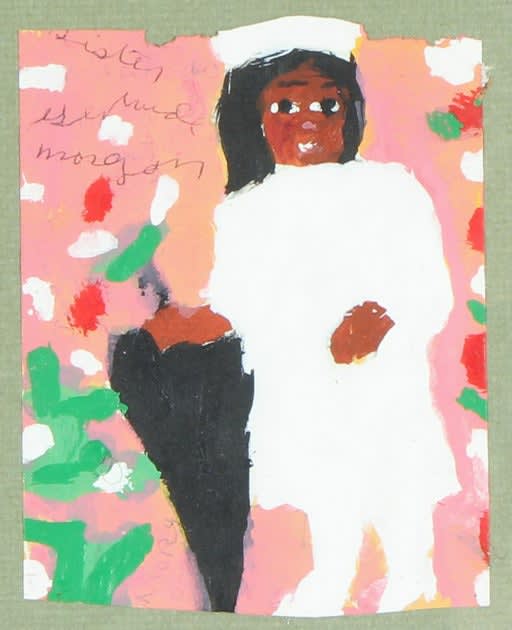Sister Gertrude Morgan American, 1900-1980
Weaving biblical tradition and her own written interpretations of the Bible, Sister Gertrude Morgan—a preacher who became an artist and poet —created art that illuminated and expanded the gospel. She believed herself to be first and foremost God’s instrument—a missionary before an artist—and her dynamic, boldly original compositions mirror her religious enthusiasm as well as her personal quirks. Born in Lafayette, Alabama, she moved to New Orleans in the late 1930s after the end of her first marriage. In New Orleans, she associated with religious groups and street missionaries who spread God’s teachings through song and dance, and she adopted the title “Sister” in the early 1940s.
Using money collected through street preaching, Morgan, Mother Margaret Parker, and Sister Cora Williams bought a plot of land in the Gentilly section of New Orleans where they built a chapel and opened a childcare facility. They offered food and shelter to orphans and children in need until a hurricane destroyed the facility in 1965. Around this time, Morgan had a vision that the Holy Ghost designated her as God’s bride. From this time on, she wore only white to honor and symbolize her unworldly matrimony.
Morgan began to concentrate on making art in the mid-1950s and worked with a variety of found and easily obtainable materials: ink, crayons, poster paint, acrylics, and watercolors on cardboard, wood and Styrofoam surfaces, window or lamp shades, and found signs, among many others. The main distinguishing stylistic feature throughout her work is her elaborate juxtaposition of pictures and handwriting working in tandem to convey a forceful message. Morgan’s work is in the collections of the New Orleans Museum of Art, the Milwaukee Art Museum, the Museum of Fine Arts (Houston), the Philadelphia Museum of Art, Intuit: The Center for Intuitive and Outsider Art (Chicago), the American Folk Art Museum (New York), the National Gallery of Art, and the Smithsonian American Art Museum (Washington, D.C.).


